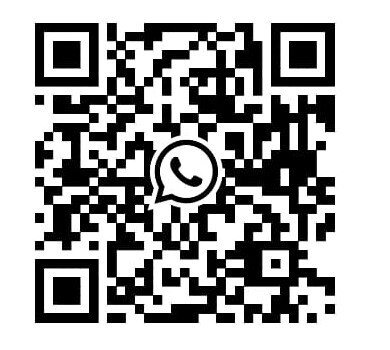Email Marketing Frequency For Vape Shops: How Often Should You Send Email Marketing?
Estimated 0 min read
Email marketing is an important source of revenue for online vape shops. Many times it’s the only way in which you can let your customers in on your deals, coupons, and sales. But did you know that too many emails or too few emails could be hurting your vape shop’s email marketing goals? That’s why in today’s blog, we go over email frequency and why it’s so important for your vape shop. So if you’re ready, let’s get started.
Table of Contents:
- What is Email Marketing Frequency?
- Finding Your Proper Email Frequency
- First Step: Make a Hypothesis
- Second Step: Choose The Correct Segment
- Third Step: Setting up Performance Metrics
- Fourth Step: Create Test Emails
- Fifth Step: Analyze Your Results
- Best Practices For Email Marketing Frequency
- Conclusion
What is Email Marketing Frequency?
Before we get started, it’s important that we first define email marketing frequency. Email marketing frequency is how many times a month, a week, or a day you send marketing emails. These could include promotions, new product alerts, or coupons. Email frequency is different from email timing since timing is what time of the day or what day of the week you send emails.
Finding Your Proper Email Frequency
You should know right off the bat that there is no universally accepted email frequency, and in fact, it varies from industry to industry and even from business to business. So you might have a vape shop that sends emails seven times a week and one that sends emails three times a week, and both email frequencies could be effective. The trick is all about finding the right balance.
If you email your subscribers too often, they might unsubscribe, start ignoring your emails, and start tagging your emails as spam. On the other hand, if you don’t email them often enough, you might be losing an opportunity to earn more sales, your customer engagement will go down, and you’ll get less traffic to your vape shop’s website.
That’s why you must figure out the best email frequency for your vape shop. Thankfully, you can follow a process that will allow you to get a close approximation of how many emails you should be sending daily, weekly, and monthly. In essence, you will be performing tests to see which frequency is best for your vape shop, and it all starts with a hypothesis.
First Step: Make a Hypothesis
The first step in creating an email marketing frequency test is to create a hypothesis. To do this, you’ll need a clear goal or objective for your email marketing frequency. Whether it’s fewer subscriptions or more leads, you need to have a goal in mind when creating these hypotheses. And creating the hypotheses is simple really, you just need to create a statement of what you expect to happen if you change the email frequency you currently use.
So, for example, if you increase the email marketing frequency of sales related emails from 3 times a week to 5 times a week, you expect email revenue to increase by 15%. Or, if you want to decrease the number of people that unsubscribe monthly by 20%, you change the frequency of all emails from 20 a month to 15 a month. The more hypotheses you make, the more tests you can create to optimize email frequency. But remember that email frequency can only be optimized once you have a goal in mind. That’s one of the reasons why it varies from vape shop to vape shop.
Second Step: Choose The Correct Segment
The next step is choosing a segment out of your email list. It’s important that the segment is big enough that it can reflect the actual subscriber list. And it’s also important that the segment you choose makes sense with the hypothesis you are trying to prove. So, for example, If you are trying to increase eliquid sales through email marketing, choosing a segment of your subscribers that has opted in to receive eliquid sales emails will be better than choosing a segment that has only opted in to receive vape devices sales emails.
Third Step: Setting up Performance Metrics
Now the third step is deciding which metrics you will use to measure your hypothesis. Because each hypothesis will be different, you will need different metrics to evaluate your success or failure. So, if you measure how many people open your email, if you increase email marketing frequency, a good metric to measure would be the open rate. If you are looking to find out if changing email frequency leads to more sales, you will check the click-through rate and conversion rate generated by your email.
Fourth Step: Create Test Emails
Now it’s time to test your emails. Here what you want to do is continue using the same templates, and subject lines you have been using before since adding new elements to your emails will only distort and alter the results. So ditch new designs and don’t add emojis to your subject lines if possible; maintain everything exactly the same. In this step, you’ll also want to schedule your emails. Make sure to keep the same days and times since email timing can also alter the results, but if raising the frequency, add new days but maintain the same time you usually send your emails.
Fifth Step: Analyze Your Results
Finally, in the last step, you get to analyze what went down after you tested your hypothesis. Did you see positive results after you increased or decreased your email frequency? Did the results remain the same from what they were before the experiment, or what metrics changed? In this last step, you will discover what works and what doesn’t, and sometimes you might need another test. In short, if you haven’t figured it out by now, finding the perfect frequency is a process of constant testing and fine-tuning to make sure that your KPIs and email marketing goals are met and exceeded.
Best Practices For Email Marketing Frequency
Now that you know the process of how to figure out or get a close approximation of the ideal email frequency for your vape shop, here are some best practices you can use when testing for that elusive and ideal email frequency number.
Give Your Subscribers the Power to Control the Frequency
If you are already using email software, chances are that you can create an email preferences page where each of your subscribers can not only choose which emails they want to receive but also how frequently they want to receive them. This takes the guesswork out of the equation for you since they give you exactly how many emails they would prefer to receive. This also gives them an opportunity to remain a subscriber instead of simply unsubscribing. The way we see it setting up an email preference page for each of your subscribers is essential when testing for frequency.
If possible, make sure that the unsubscribe link in your email leads to the email preference page and that subscribers see it even before they attempt to unsubscribe, landing on the preference page will many times change their mind, and they will opt to receive fewer emails than just flat out unsubscribing.
Don’t Forget Email Timing
In the steps above, we told you to maintain the times and days the same as not to skew the results. However, email timing is just as crucial as and important as email frequency. Email timing can take an ideal email frequency to the next level. For example, if you are a vape shop that is located on the US East Coast, and you send emails every morning, say 9 AM Eastern Time, and you discover that your audience only opens it hours later, this could be because a majority of your subscribers are located in the US West Coast.
Or you might discover that most of the people subscribed to your email list open your emails on Mondays and Tuesdays rather than Wednesday, Thursdays, or Fridays because the latter days would be too late to order and receive a vape juice they ordered.
By experimenting with the time, you send your emails and also the days you might discover that you can double your open rates, click-through rates, and, more importantly, your conversions.
Automate Your Emails
Another important thing to do to make sure you don’t alter the results of testing your frequency and to maintain a rigid schedule is to automate your emails. Not only will this save you time, but it will also allow you to plan a month in advance and more easily create your experiment. And since you won’t be sending the email campaigns one by one, there will be less room for human error.
Conclusion
As stated before, finding the right email frequency is a matter of patience and constant testing. Once you have achieved one goal or proven a hypothesis right, you’ll want to see in what other areas you can improve upon by changing, reducing, or ramping up the frequency of your emails. Once you have found a frequency that you believe is best, you can start testing out new templates, new subject lines, and changing other elements to improve your results even further.







